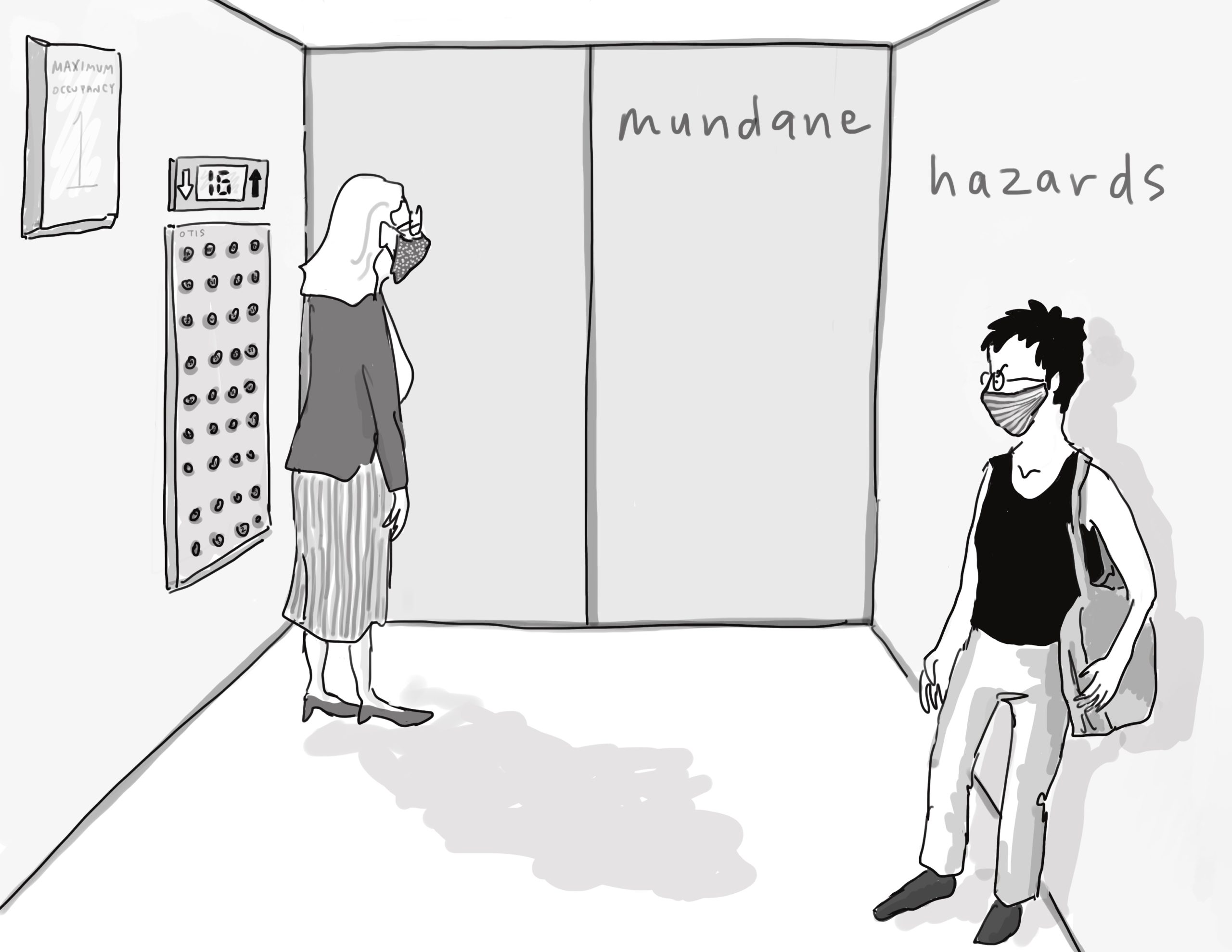
When the COVID-19 pandemic began, Asian Languages and Cultures professor and chair Rivi Handler-Spitz turned to a beloved old hobby to cope with the uncertainty and worry she was feeling: one day in March 2020, she sketched her fears about her parents’ exposure to the virus. The next day, she drew again. Before long, her daily drawing became routine, and Handler-Spitz started sharing her work with friends and family via email. Then she committed to keeping her daily project going for at least a year.
In 2021, ten of her comics were featured in The COVID Chronicles: A Comics Anthology, a collection of graphic narratives from artists around the world, edited by Kendra Boileau and Rich Johnson. In November, The Washington Post featured the anthology on its “Best Graphic Novels of 2021” list. We asked Handler-Spitz about her daily drawings, the anthology, and how her art is shaping her scholarship and teaching in new ways.

How does a sinologist—someone who studies Chinese language, literature, history, and culture—become a cartoonist?
As a child, I would spend hours drawing. My mom would pack a pencil or crayon for me in her purse wherever we’d go, and that’s how I would amuse myself while grownups talked about incomprehensible things. But as I got older, I started studying Chinese, and although I never thought about it so explicitly, the visual interest of the Chinese characters was part of what attracted me to studying Chinese language, then history and culture. For nearly twenty years, that interest eclipsed nearly everything else. I was so focused on cultural and language immersion that my art became limited to doodling while I was on the phone, or making a birthday card for someone. When I allowed myself to return to drawing, it felt like a homecoming.
When the pandemic began, I started doing these daily drawings at a moment of panic. I kept the journal as a way to manage my own terror—of this unknown illness, of having vulnerable parents, and not knowing what this world was coming to. It was for myself, but I also shared my drawings every day via email. Then one of the editors I’ve been working with on my Chinese scholarship saw a discussion about The COVID Chronicles project on one of her listservs and thought of my daily drawings.
Have you continued your daily drawings, and how do you approach that challenge?
A couple of months into the pandemic, I made a solemn vow to the email recipients of my daily drawings that I’d do it for a year. At that time, it felt like a huge commitment—a promise I’d never be able to fulfill. But then I wanted to follow through. I used to feel at the beginning that I’d need a reserve of ideas to keep this up for an entire year, but over time, I realized there’s never any dearth of material. The quality of the images varies, of course. Sometimes I spend hours drawing and then feel disappointed with how it turns out. Other days I throw something together that really resonates. Some days I have to force myself to do it. Sometimes it can be cathartic to realize I’ve come to understand a problem better by drawing about it.
How does this project shape your perspective in the classroom?
It’s been really exciting to return to a mode of self-expression I love and feel very close to but had neglected for so long. I’ve started experimenting with ways to blend visual self-expression with sinological scholarship—as I’ve found the confidence to use this medium more and more, and it’s been transformative.
This semester, I’m teaching a course called “The Art of Writing in China,” and we’re thinking a lot in class about the visual aspect of Chinese writing. My students keep a weekly journal, and I’ve been encouraging them to experiment with drawing. Outside of class, I’ve been focusing some of my daily drawings on exploring my ideas about the course material. There are days when I’ve been kind of stuck, when I can’t imagine how to express an idea visually, and then I see a journal entry from one of my students who has managed to do exactly that. That’s been one of the most exciting things about this class: to work through the material together. They know I’m doing the same homework they are.
March 29 2022
Back to top




